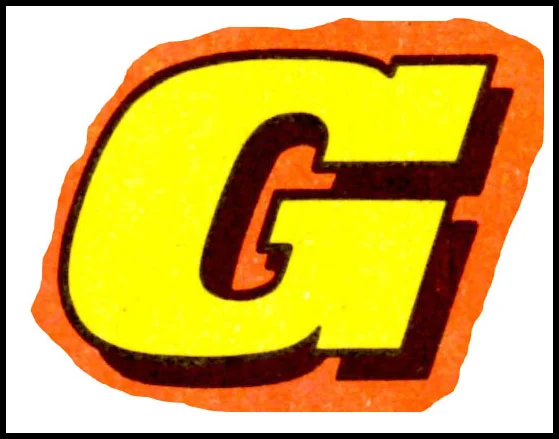Story File: D-Day Dawson
D-Day Dawson: 'Double Cross!': Gerry Finley-Day (writer), Colin Page (artist)
Steve Dawson was a sergeant in the British army who took a bullet to the chest in the process of saving a fellow soldier during the D-Day Normandy landings in June 1944. He was returned to one of the Allied boats, where he was told by a medic that the bullet had lodged close to his heart – not close enough to have killed him on the beach but too deep to be removed. Over time – probably a year – it would edge closer to his heart and eventually end his life. Straight after receiving this news the boat was bombed and sank, killing all on board except Sergeant Dawson. His chest heavily bandaged, he waded to shore and rejoined his platoon. Nobody knew of his death sentence, so he decided to keep it a secret and join his fellow soldiers on the long push across Europe to Berlin. If he was going to go down, he was determined to take as much of the enemy down with him. ‘I’m living on borrowed time – but every second of it’s gonna be hell for the Germans.’
D-Day Dawson was the very first story to appear in Battle Picture Weekly – the first of a new wave of more mature and realistic comics aimed at boys in the mid-1970s. Its dark, tough-luck storyline and the extreme risks taken by Dawson – the soldier with nothing to lose – obviously appealed to young readers as the story remained in pole position in the comic for the first eight months of its run. Every one of its 88 episodes was a self-contained storyline, most of them with their own story title, in which Dawson took an extreme, death-defying risk in order to stick it that little bit deeper to the Jerries.
The series spanned the course of the Allies’ slow push across occupied Western Europe as the Sarge and his platoon (notable named soldiers were Corporals Spring and Crocker and Private ‘Whitey’ White) liberated villages, towns and POW camps and attacked German airfields, railway yards and rocket-launching bases. Most of the three-page episodes would open with the men already engaged in the heat of some battle, develop into a story of Dawson saving the day, and end with a final panel in which his companions congratulated him on his ability to cheat death once again while Dawson pondered solemnly on the irony of his plight.
The strip ran every week for 64 episodes between March 1975 and May 1976, then took a summer break when Dawson was temporarily shipped back to England to recuperate after suffering a shoulder wound protecting a conference of Allied generals from an enemy attack. Back home, he was awarded the Victoria Cross, but retained his death wish and rejoined his platoon at a rest camp in Arnhem for the start of the strip’s second run between August 1976 and January 1977. Within the story, Dawson’s journey ended a year after it began – in May 1945, days before the end of the war, on a beach on Germany’s north coast. Left for dead after helping Whitey and company take out a German pillbox (mirroring the events of the story’s first episode), Dawson saves his men one last time, summoning his remaining strength to shoot down an enemy support ship. Sensing death, he scrapes a message for his fellows into the sand before staggering into the sea to end his life. It’s a bitter, moving conclusion to a quality story which had reached its natural inevitable end. There was only so far this tale could go with its protagonist’s sole motivation – in narrative terms the heart-bound bullet would eventually kill the story just as it killed Sergeant Steve Dawson.
But in its prime D-Day Dawson was an outstanding story, cleverly crafted each week by a range of creators. Gerry Finley-Day, Ron Carpenter, Eric Hebden and his son Alan Hebden were the most prolific writers, while Battle Picture Weekly’s editorial team of Pat Mills and John Wagner shaped Dawson’s character by scripting some of the earliest episodes. Geoff Campion, Colin Page and Jim Watson were among the talented artists to realise the stories, although – for me – a small criticism of the series is that the frequent changes of artist made it hard to achieve a distinctive look for Steve Dawson himself. The series was reprinted in Battle between 1982 and 1984.
D-Day Dawson: 'Beach Head!': Gerry Finley-Day (writer), Geoff Campion (artist)
D-Day Dawson: 'Beach Head!': Gerry Finley-Day (writer), Geoff Campion (artist)
D-Day Dawson: 'Beach Head!': Gerry Finley-Day (writer), Geoff Campion (artist)
D-Day Dawson: 'Beach Head!': Gerry Finley-Day (writer), Geoff Campion (artist)
D-Day Dawson: 'Man on Fire!': John Wagner and Pat Mills (writers), Geoff Campion (artist)
D-Day Dawson: 'Death-Drive!': John Wagner and Pat Mills (writers), Geoff Campion (artist)
D-Day Dawson: 'Execution Squad!': John Wagner and Pat Mills (writers), Geoff Campion (artist)
D-Day Dawson: untitled: Gerry Finley-Day (writer), Geoff Campion (artist)
D-Day Dawson: 'Suicide Attack': Gerry Finley-Day (writer), Colin Page (artist)
D-Day Dawson: 'Nazi Plunder': Ron Carpenter (writer), Geoff Campion (artist)
D-Day Dawson: 'Blow the Bridge': Alan Hebden (writer), Geoff Campion (artist)
D-Day Dawson: untitled: Eric Hebden (writer), Colin Page (artist)
D-Day Dawson: untitled: Eric Hebden (writer), Colin Page (artist)
D-Day Dawson: untitled: Alan Hebden (writer), Colin Page (artist)
D-Day Dawson: untitled: Alan Hebden (writer), Colin Page (artist)
D-Day Dawson: untitled: Eric Hebden (writer), Jim Watson (artist)
D-Day Dawson: untitled: Eric Hebden (writer), Jim Watson (artist)
D-Day Dawson: untitled: Gerry Finley-Day (writer), Jim Watson (artist)
D-Day Dawson: untitled: Gerry Finley-Day (writer), Jim Watson (artist)
D-Day Dawson: untitled: Gerry Finley-Day (writer), Jim Watson (artist)



































